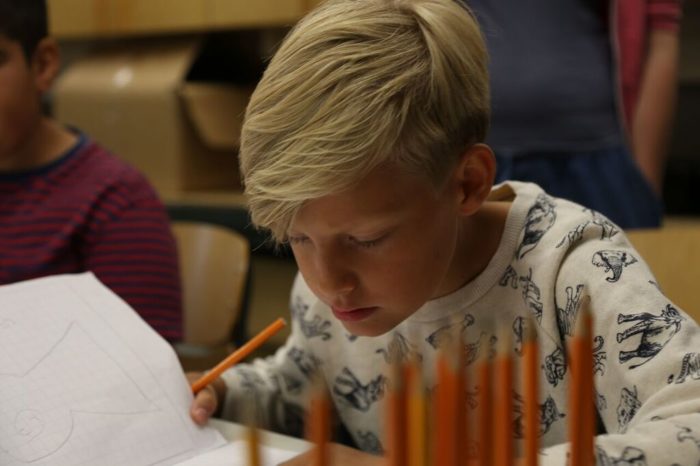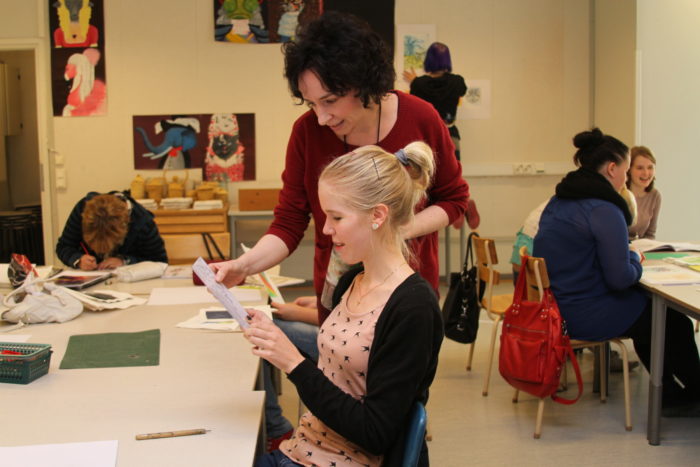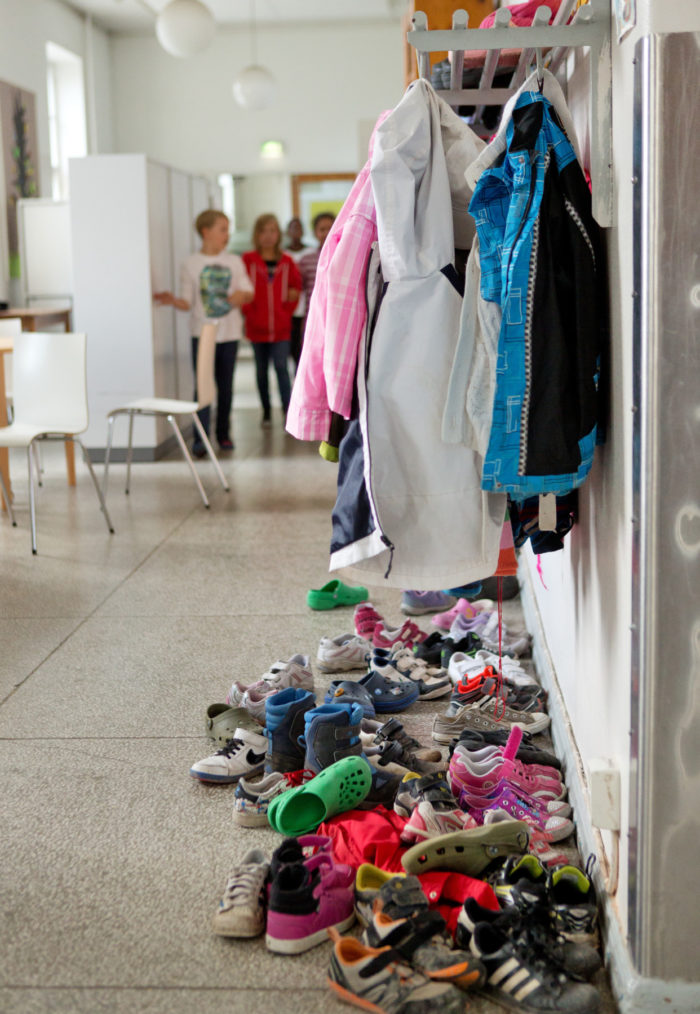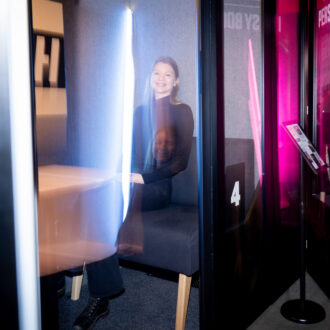Adopting new methods for learning and teaching could knock Finland off the top of the international Pisa rankings for education systems, but this is of little interest to Finns. The most important goal is teach youngsters the skills they will need in future.
Claim 1: Students will no longer study in their classes at all. Teaching will be “phenomenon-based”, meaning that teachers will work “experimentally” with schoolchildren outside the conventional school setting.
Response:
Yes and no.
“The phenomenon-based approach is just one way to learn. It’s important that varied pedagogical methods are used. Teachers become enablers, helping each child find their own way to learn,” says Anneli Rautiainen, head of the Basic Education Unit of the National Board of Education.

Finland’s new curriculum means that schoolchildren will no longer need to sit down quietly in classrooms, since they will instead be able to choose where and how they study. In future there will not necessarily be any traditional enclosed classrooms. Photo: Riku Isohella/ Velhot Photography Oy
Claim 2: Classrooms will be abandoned and replaced by open marketplaces where children will “buy” the subjects and courses they feel are suitable for them.
Response:
Yes and no.
“Teaching will no longer happen just inside four walls, but it will depend on how schools want to realise this. Pedagogical practices will change so that children no longer need to sit down quietly in one place, but can instead choose where and how they study. New schools have already been built free of corridors. In future there will not necessarily be any enclosed classrooms. Learning will happen everywhere,” explains Rautiainen.
Claim 3: Schoolchildren will make “bad” choices that will affect them into adulthood – for instance if they opt for more mathematics instead of a language course, or vice versa.
Response:
No.
“Unlike in other countries such as Britain and the US, we don’t feel in Finland that there are important subjects and less important subjects. All subjects play an equally important role. The goal is to give youngsters a broadly-based education, and not to make them learn single subjects well,” says the Finnish educational expert Pasi Sahlberg, who is currently a visiting professor at Harvard Graduate School of Education.

School days are shorter in Finland than in most other countries, so additional homework will continue to be set.Photo: Mohammad Alfaraj
Claim 4: Pupils will themselves decide which level of achievement they want to aim for, and they will be set assignments enabling them to achieve such grades. There is a risk that students capable of high grades will only aim for low grades, so they can have an easy time.
Response:
No.
“Learning goals and the criteria for good ability levels are defined in the curriculum. Teachers will talk to pupils about the goals they want to set themselves. One problem has previously been that pupils have not always known why they were given a certain grade. When they are actively involved in such discussions their motivation will grow,” explains Anneli Rautiainen.
Claim 5: Schoolchildren will no longer be divided into conventional groups of learners, but will instead hang out in their own cliques according to their interests.
Response:
No.
“Teachers will always be responsible for pupils. Learning groups will be formed so as to ensure the goals set in the curriculum can be reached. We hope that schools will group pupils varyingly, according to what and how they are learning. Some pupils may like to talk while they are learning, while others will want to be quiet,” says Anneli Rautiainen.
Claim 6: The brightest students will no longer fare so well, because cramming will be neglected.
Response:
Yes and no.
“If students earlier got top grades only by cramming, then this claim might prove true. Sometimes it is worth learning things by heart, like multiplication tables. But rather than parrot fashion learning the new curriculum emphasises skills that will be needed in future, such as learning how to learn, critical thinking, interactive skills and the ability to use technology. The world is changing, and schools and learning must change with it,” explains Anneli Rautiainen.

In Finnish schools all subjects are seen as equally important in giving students a broadly-based education.Photo: Andreas Meichsner/Verstas
Claim 7: All provenly effective teaching methods will be abandoned, and schoolchildren will end up just messing around.
Response:
No.
“Many people around the world seem to think Finland is a socialist country, where some bigwig in Helsinki decides what everyone must do. One big difference between Finland and other countries is that here the teachers, schools and local authorities can by and large decide themselves what should be taught and how,” says Pasi Sahlberg.
Claim 8: Homework will not be set at all.
Response:
No.
“In Finland school hours are quite short, so we think it’s good for pupils to go through things at home a little,” says Anneli Rautiainen.

The teaching profession is seen as highly desirable among Finnish youngsters, and there is tough competition for places in teacher training courses. Under the new curriculum teachers will become enablers who no longer spoon-feed facts to their students, but instead help them to learn and understand. Photo: Amanda Soila
Claim 9: There will be no more tests and exams.
Response:
No.
“Evaluation will become continuous, guiding and supportive. Grades will not be based on test results alone. Tests are part of learning, but not the heart of it. You can also demonstrate your ability by realising projects or through oral presentations. If you fail in a test, you can try again later, and learn things in between,” says Anneli Rautiainen.
Claim 10: Teachers will have to be super-adapters, able to teach from this autumn onwards using completely different methods, and dealing with new subjects like coding.
Response:
No.
“The new curriculum does challenge teachers to change their pedagogical methods. And this will also take time. The greatest challenge is the change in their role. Teachers will no longer be information providers, and pupils will no longer be passive listeners. We want schools to become communities where everyone learns from each other – including adults learning from children. Technological skills and coding will be taught together with other subjects. To support teachers there will be people like digital tutors, for instance,” explains Anneli Rautiainen.

In Finland almost all youngsters (99.7%) complete the syllabus of basic education and graduate from comprehensive school.Photo: Riitta Supperi/Keksi/Finland Promotion Board
Claim 11: Learning difficulties will not be found, because pupils will be responsible for their own achievements.
Response:
No.
“We have extremely highly trained teachers, and a setup that’s well prepared to support students. Though students will be more active, this doesn’t mean that they’ll take over all responsibility for learning. On the contrary, it will be more important than ever for teachers to be close to their pupils,” Anneli Rautiainen says.
Claim 12: The new curriculum will consign Finland’s excellent results in the international Pisa ratings for education systems to the dustbin of history.
Response:
Maybe, but so what?
“The significance of the Pisa rankings in Finnish thinking is quite negligible. They are seen as a kind of blood pressure check, enabling us to occasionally consider which way we are heading, but they are not a permanent focus. Decisions related to education are not taken with the Pisa ratings in mind. Instead the essential factor is the information that children and young people will need in the future,” says Pasi Sahlberg.
By Ninni Lehtniemi, July 2016
9 facts about Finland’s 9-year basic education1. Compulsory schooling starts from the school year during which children turn seven, and ends when they have either completed the entire nine-year basic education curriculum or, at the latest, after the school year when they turn 17. All children are also entitled to one year of preschool education. 2. Tuition, school books, learning materials and equipment are all provided free of charge for the nine-year basic education. 3. All pupils are also provided with a free school meal every school day. 4. School days must not be longer than five lessons for children in first and second grade classes, and seven lessons for older schoolchildren. Each lesson is 45 minutes. 5. There are no nationwide examinations or grading tests. 6. There are a total of 190 school days in a Finnish school year. School year starts in the middle of August and ends in May. Finnish kids have about 10 weeks of summer holiday as well as holidays in autumn, Christmas break and winter usually in February. 7. In Finland almost all youngsters (99.7%) complete the syllabus of basic education and graduate from comprehensive school. 8. Teacher training courses are popular and difficult to qualify for. In 2014 only 9% of applicants sitting the entrance exam for Helsinki University’s training for class teachers were admitted. 9. Teachers working with children in grades 1–6 must be qualified to a level of at least Master of Education. Teachers working with grades 7–9 must have a Master’s degree in their subject, as well as high level qualifications in education. |



